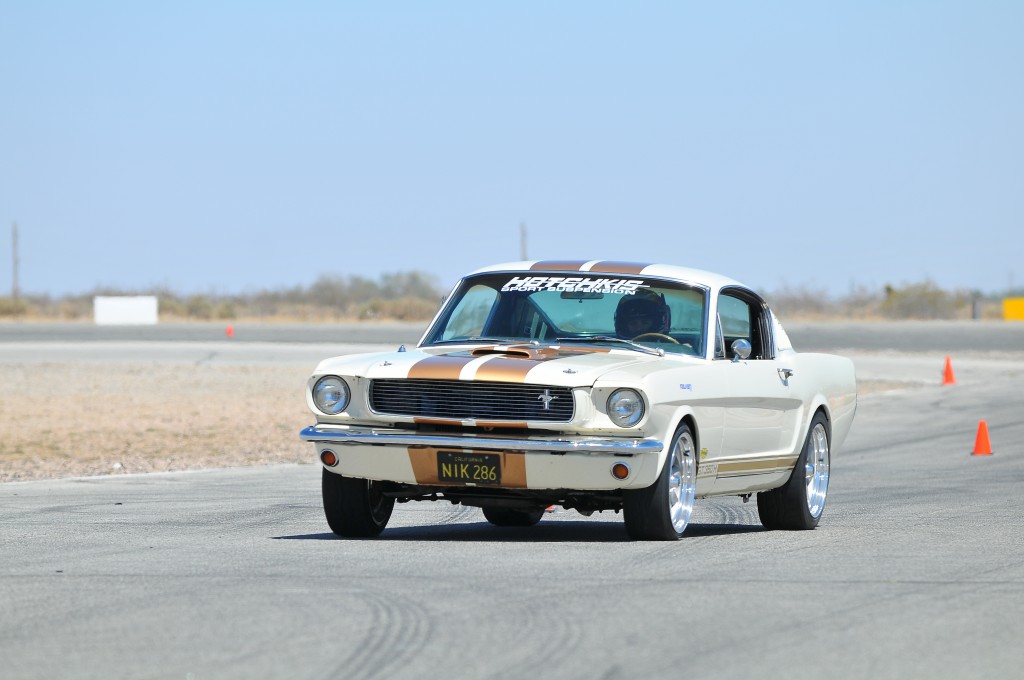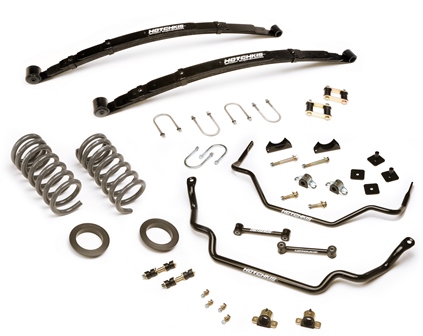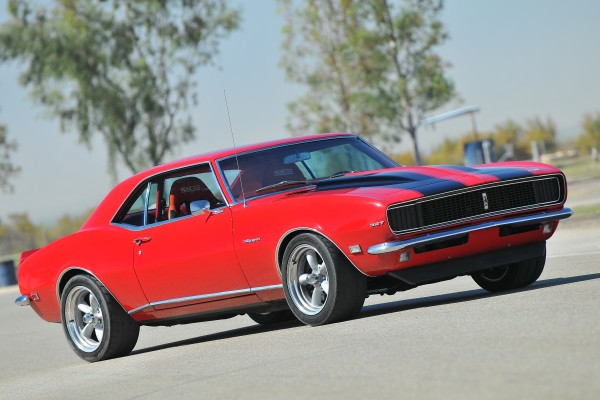When Hotchkis Performance talks about suspension, we listen.
Hotchkis sent us this primer on updating the suspension on classic 1960s and ‘70s muscle cars to make them handle like a late model. According to Hotchkis, an upgraded suspension is not just a performance advantage, it’s also a safety issue on modified vehicles. The stock suspension—even one that’s completely rebuilt—cannot handle the big doses of horsepower, larger wheels, and modern performance tires we love to add to our vehicles. That can lead to serious handling and steering issues that can be dangerous on the street and downright deadly on the track.
5-Step Suspension Plan
Suspension design, engineering, and technology have come a long way since the 1960s and ‘70s when some of our favorite muscle cars were designed and built. Just about any modern car (even minivans!) can drive circles around a classic muscle car with an OEM suspension, even one that has been totally rebuilt. What’s more, that OEM suspension was not designed to deal with today’s big-horsepower engines and especially modern performance radial tires with stiff sidewalls. Those tires create increased cornering loads that cause the soft factory rubber bushings and control arms to flex. This flex can overload the power steering pump and force you to fight for control of the car.
Modern radial tires need an entirely different suspension geometry with ample negative camber and positive caster to work correctly. A well engineered performance suspension package, like the Hotchkis Total Vehicle System (more on that in the slide show below), can address handling problems in one fell swoop. But you can follow these steps and improve your handling as your budget allows without having to take the vehicle off the road:
- Replace any worn steering components like the ball joints, idler arm, center link, and tie rods.
- Add a matched set of front and rear sway bars and a good performance shock package. These will give you the immediate improvements in handling, control, and ride comfort.
- Add a performance spring package with higher than stock spring rates that lower the car for increased control and a modern, aggressive look.
- Address the suspension geometry with geometry-corrected front upper and lower A-arms, a bump steer control kit (when applicable), and a performance rear suspension package with adjustable upper trailing arms. These modifications will add positive caster, allow you to adjust static camber settings, and optimize rear pinion angle for enhanced grip and control.
- Add chassis braces to stiffen and support shock towers, the front subframe, suspension pickup points, and unibody structures so the car can better cope with the increased cornering loads the suspension upgrades are able to generate.
For drivers looking to extract every last bit of handling potential for autocross or track day events, adjustability is the key. Adjustable sway bars allow roll stiffness to be increased or decreased to match the driver’s preference for understeer, oversteer, or neutral handling. Well-tuned performance shocks dampen spring energy so the tires can maintain the optimum contact patch. Double- and even triple-adjustable shocks are available to further fine-tune handling and ride quality, but a good set of single- adjustable shocks that control rebound damping can do a good job and are more affordable.
In the end, the objective of a good performance suspension is to balance handling, braking, and acceleration, creating a car that is both fast and fun to drive instead of a white-knuckle experience that scares you every time you turn a corner.









[…] or they can buy a complete kit and do the whole shebang at once. This article on Summit Racing’s OnAllCylinders blog will explain the thinking behind the TVS […]
[…] (Interested in a total suspension upgrade? Check out this 5-Step Plan for Making Your Classic Muscle Car Handle Like a Late-Model.) […]
Great information..I have s Austin Healey kit car. A Marlin 5000. It was made around 1980 in Fargo. It rides REAl rough. When I hit pot holes, even small holes, it feels like the entire bottom is falling out. I am not sure just what components were used on the build. Mustang II… Pinto coil springs 70 72… I will have to take some measurements and see if I can determine mor about this build..I WILL definitely get back to you and maybe this can be made better.
Do you make anything for a 4 door 1971 Ford Galaxie sedan?